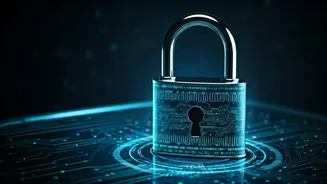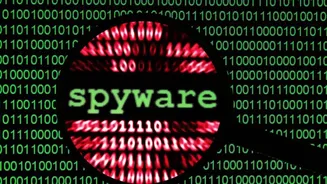Privacy is Paramount
Since 2005, countless individuals have utilized services to secure their perfect domain names. However, the process of acquiring a domain name necessitates
the sharing of personal information, which can expose individuals to privacy risks, including potential spam, identity theft, and unwanted solicitations. Maintaining your privacy starts with understanding the information registrars collect, like name, address, phone number, and email. Once this information is public, it becomes available to anyone who searches the WHOIS database. Hence, it's crucial to implement measures to conceal this sensitive data and maintain your online privacy. Fortunately, several strategies and services are available to shield your information.
Protecting Your Details
One of the most effective ways to preserve your privacy is by using a domain privacy service. These services act as intermediaries, replacing your personal information in the WHOIS database with their own. Consequently, individuals looking up your domain will see the service's details instead of yours. This significantly reduces the risk of unwanted contact and protects you from potential threats. Choosing a registrar that offers domain privacy is a crucial first step. Ensure that the registrar provides this feature automatically or offers it as an add-on service. Carefully review the terms of service to understand the extent of their privacy protection. Some registrars offer 'private registration' where they forward any legitimate inquiries to your email without revealing your personal data.
Post-Purchase Security
After acquiring your domain, certain steps are necessary to maintain its security. Always create a strong, unique password for your domain registrar account. This will protect your domain from unauthorized access and potential hijacking attempts. Regularly check your account for any suspicious activity and ensure your contact details remain up to date. Keep an eye on your email inbox for any communications from your registrar. Phishing scams that target domain owners are common. Be cautious of emails asking for personal information. Verify the sender's authenticity before clicking any links or providing any details. Additionally, enabling two-factor authentication (2FA) adds an extra layer of protection, making it harder for unauthorized users to access your account.
Transferring and Management
If you wish to transfer your domain to another registrar, remember this move can sometimes compromise your privacy if not managed correctly. Prior to initiating the transfer, ensure the new registrar offers equivalent or better privacy protection than the current one. Initiate the transfer process only with a reputable provider. Typically, you'll need an authorization code (EPP code) from your current registrar to authorize the transfer. Carefully follow the new registrar's instructions and ensure that your personal information is masked during the transfer process. After the transfer is complete, it’s advisable to double-check that your privacy settings are active and functioning correctly. Regularly review the privacy settings associated with your domain name and web hosting account.
Ongoing Vigilance Required
Maintaining domain name privacy requires continuous vigilance. Keep informed about the latest security threats and best practices. Frequently update your domain name's contact information and privacy settings. Furthermore, consider using a separate email address specifically for domain-related communications. This will help you keep your personal email address private. Regularly check the WHOIS database to verify that your information is correctly masked, and take immediate action if you notice any discrepancies. Staying proactive and following these guidelines will significantly reduce your risk of privacy breaches and help secure your digital identity. By implementing these measures, you can safeguard your information and maintain your privacy.












